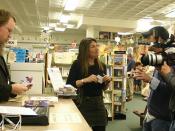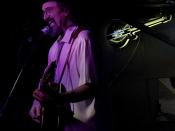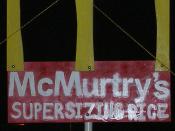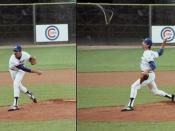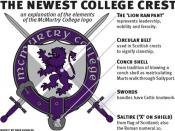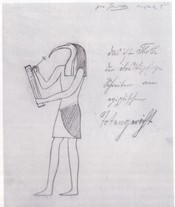McMurtry and Toth both describe their experiences of two different pastimes in "Drinking in Houston," and "Cinematypes.". McMurtry explains the differences between types of bars and clubs while Toth compares her different experiences going to the movies and her companions. Although they both use various forms of description, the two writers vary in their classification, tone, diction, syntax and style their articles.
First, McMurtry separates his essay into three parts; each one describing the type of bar a person might go to depending on his economic status. His use of classification allows him to make a clear contrast between the "hierarchy" of the bars in Houston. Toth also differentiates between going to the movies with each companion by using separate paragraphs. However, Toth goes on to separate those paragraphs to facilitate comparing her companions' choices of film and behavior during the film, with their way of ending the night.
Then., McMurtry's tone throughout his essay remains calm and informative; as if he were sharing his knowledge to a tourist. Toth on the other hand, maintains a tone of amusement; as if she were analyzing her different companions and sharing her experiences with a friend. She introduces each movie-going companion by stating what type of film he likes. She then continues with reasons why that person likes or dislikes a certain type of film, adding some humor to keep a lighthearted mood. "Sam likes movies that are entertaining"æ He does not go to movies to think" (Toth, 7).
McMurtry begins the essay with, "If one were forced to choose a single aspect of Houston" (McMurtry, 1). His use of the word "forced" implies that he is not making this conclusion about bars in Houston on his own free will. It supports his informative tone; speaking as if he were helping out a tourist. McMurtry also chooses to mention proper names to describe certain things, such as the "River Okie way," the drink, "Pearl," and "Franklin Street." This helps describe the surroundings with more specificity and allows the reader to picture the scenes more clearly in one's mind. Toth's diction, on the other hand, seems less formally informative and more casual. She uses proper nouns as well, when naming the people with whom she went to the movies, or when naming the titles of the films that she saw, such as "Belle du Jour" and "Coming Home." The titles of the films help give the reader an idea of what the movie is about.
One may notice that McMurtry's sentences tend to be longer and each sentence usually has at least one comma separating each point of description. "Their clubs are very posh, if in a somewhat River Okie way, and tend to be altitudinally remote" (McMurtry, 1). Toth's syntax is similar, but she varies in sentence length. She rotates from short sentences, "Aaron takes me to only art films" (Toth, 1), to longer ones, "Pete doesn't like propaganda movies, though, and he doesn't like to be too depressed, either" (Toth, 4).
Finally, the difference between McMurtry and Toth's style of writing is as simple as the difference between something that is concrete and abstract. McMurtry mostly describes information that is considered true according to the townspeople. He simply states and describes each type of bar and its surroundings, not including his personal biases. His descriptions are not his own opinions. They are the views of the town residents. "The poor have beer-bars, hundreds of them, seldom fancy but reliably dim and cool" (McMurtry, 3). Toth on the other hand, describes each event with a bit of her personal interpretation and how she felt in response. Her descriptions are incorporated with her emotions. "Sometimes he leans so far I am afraid he may be touching the woman on his other side" (Toth, 2).
